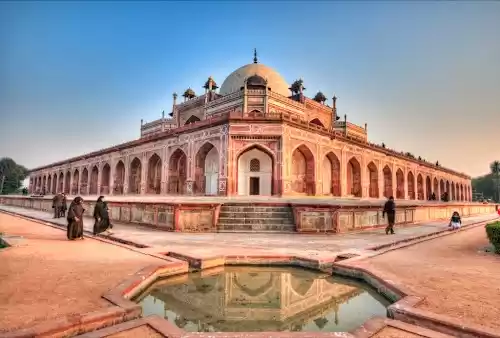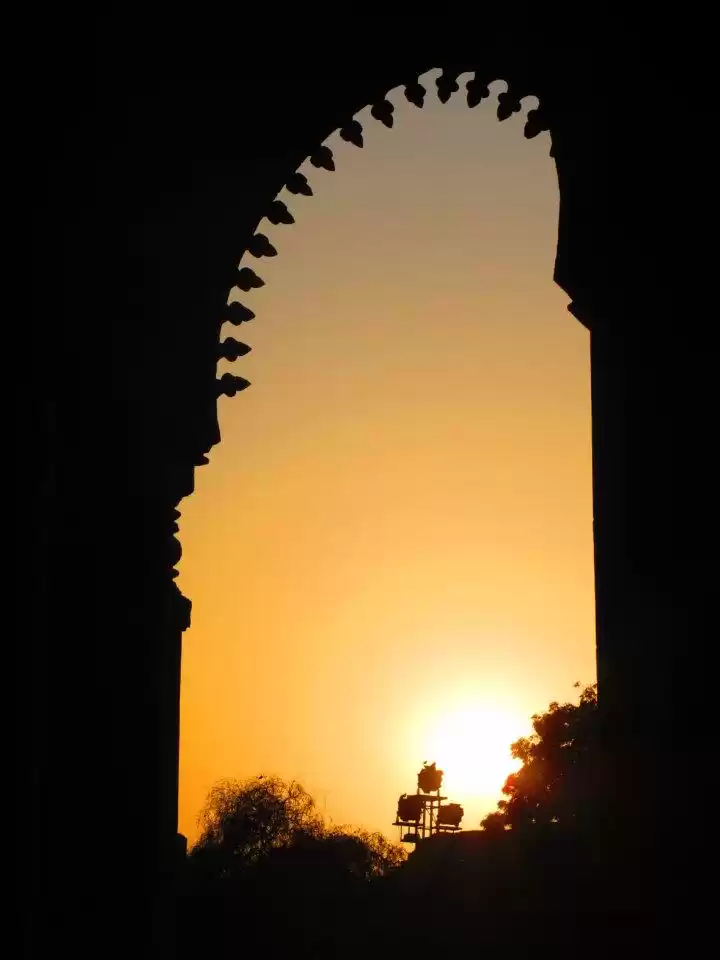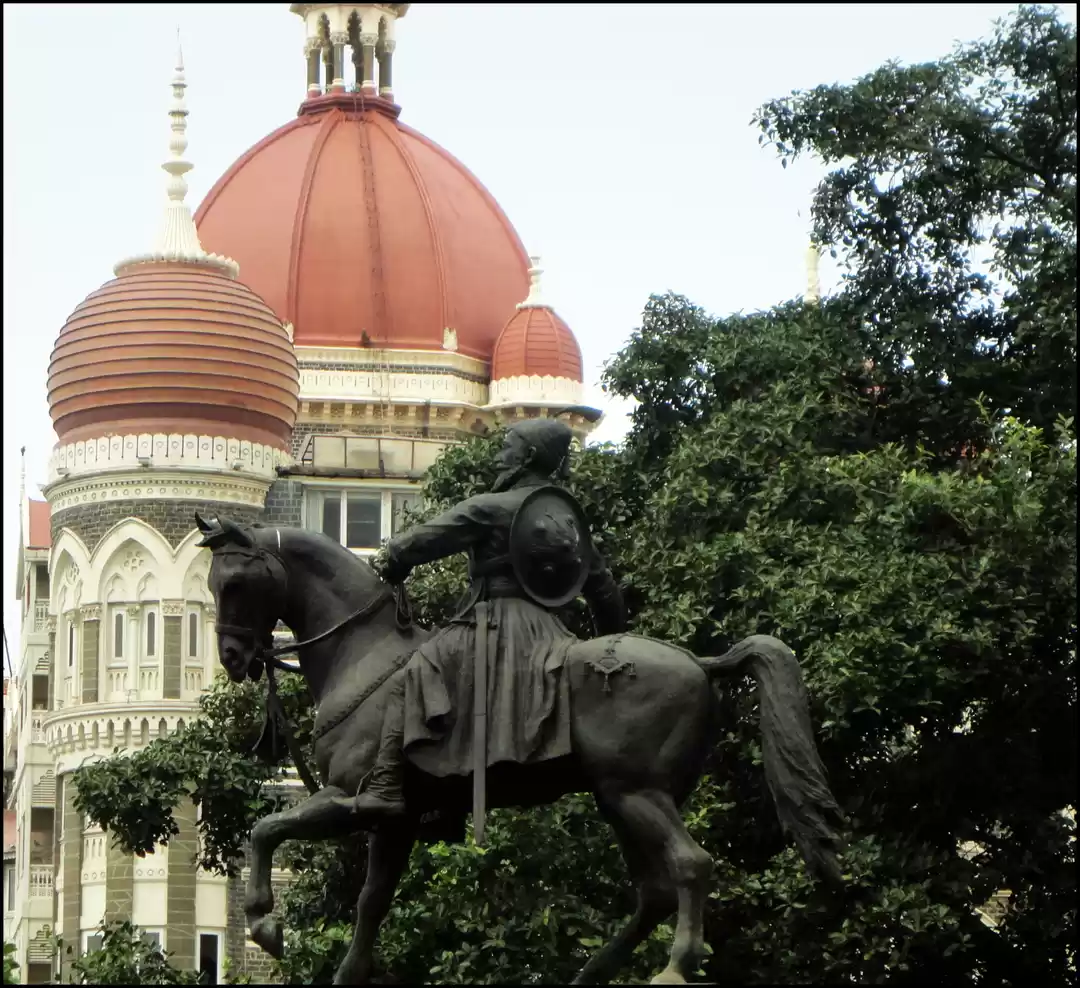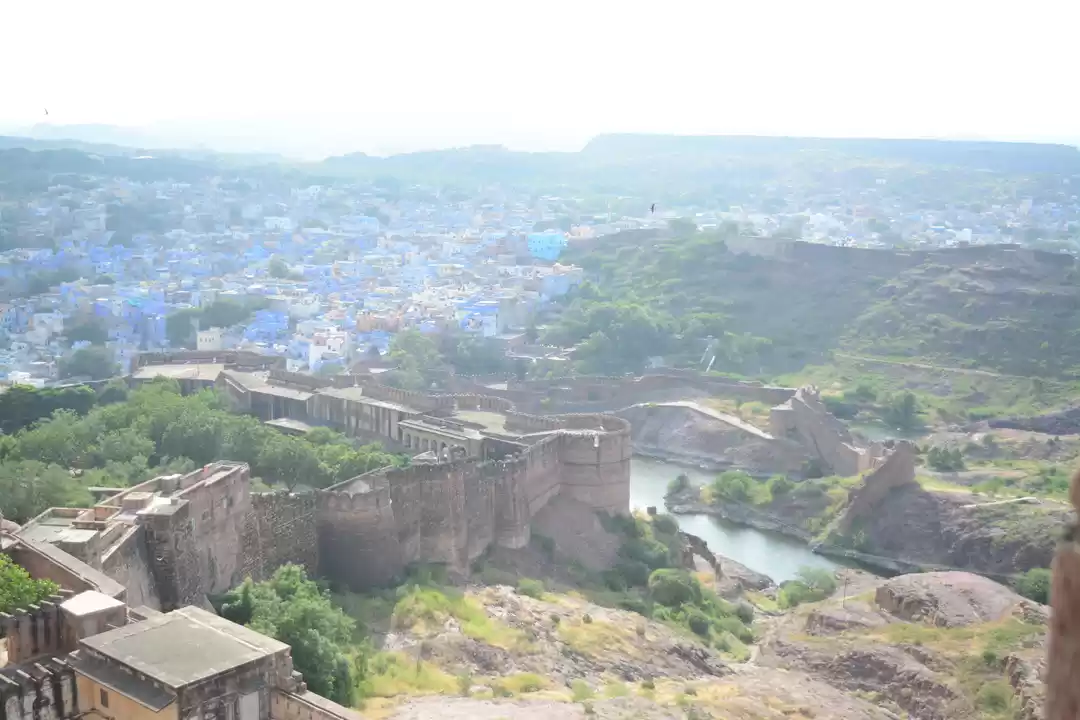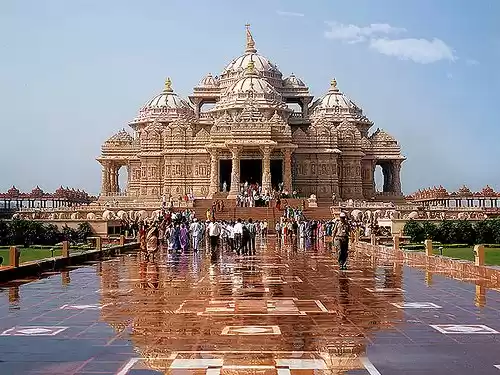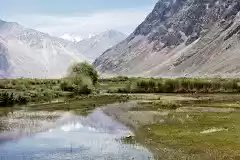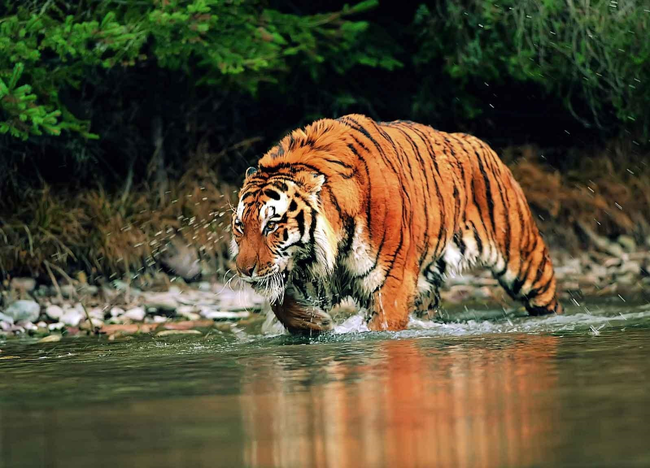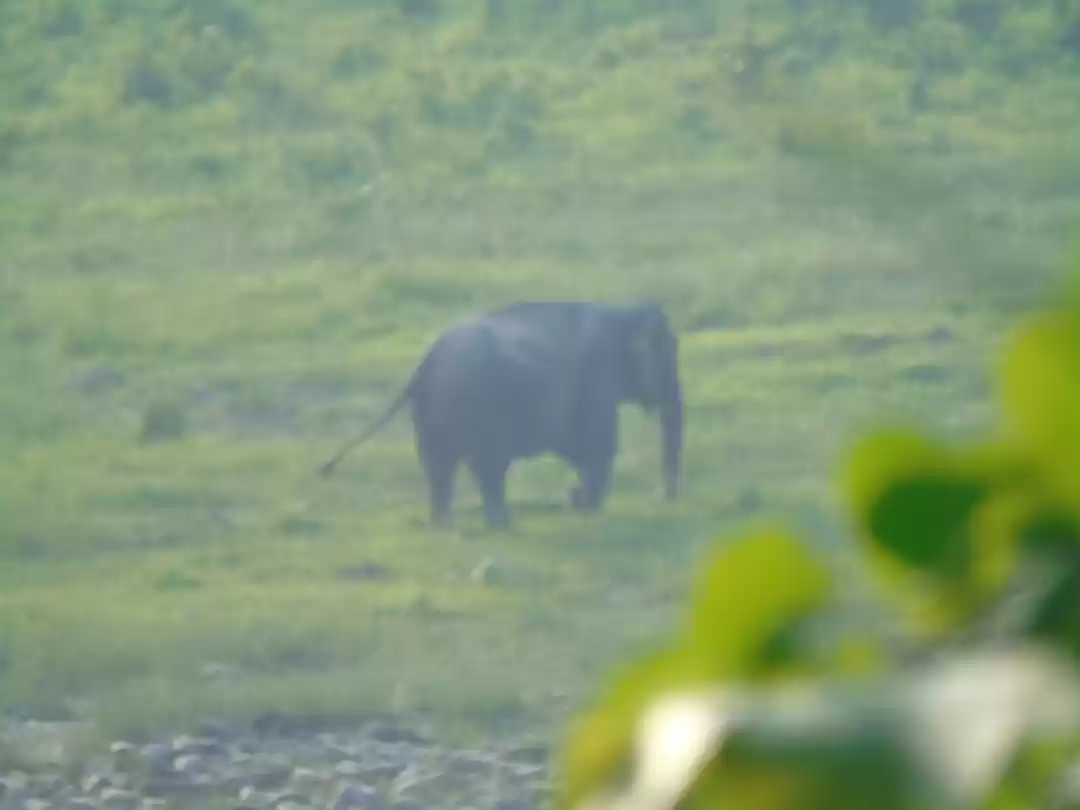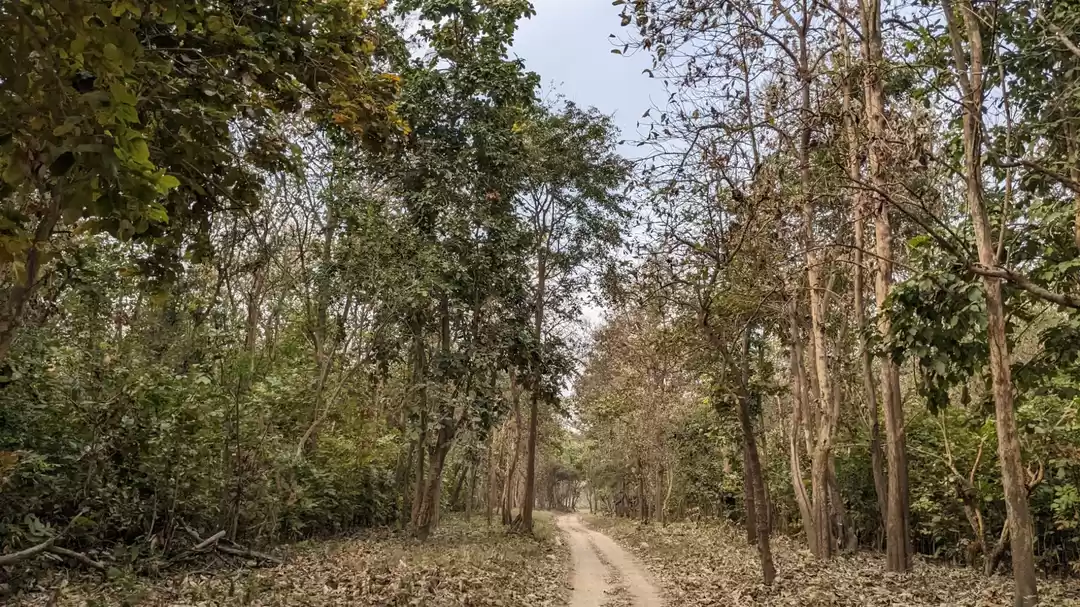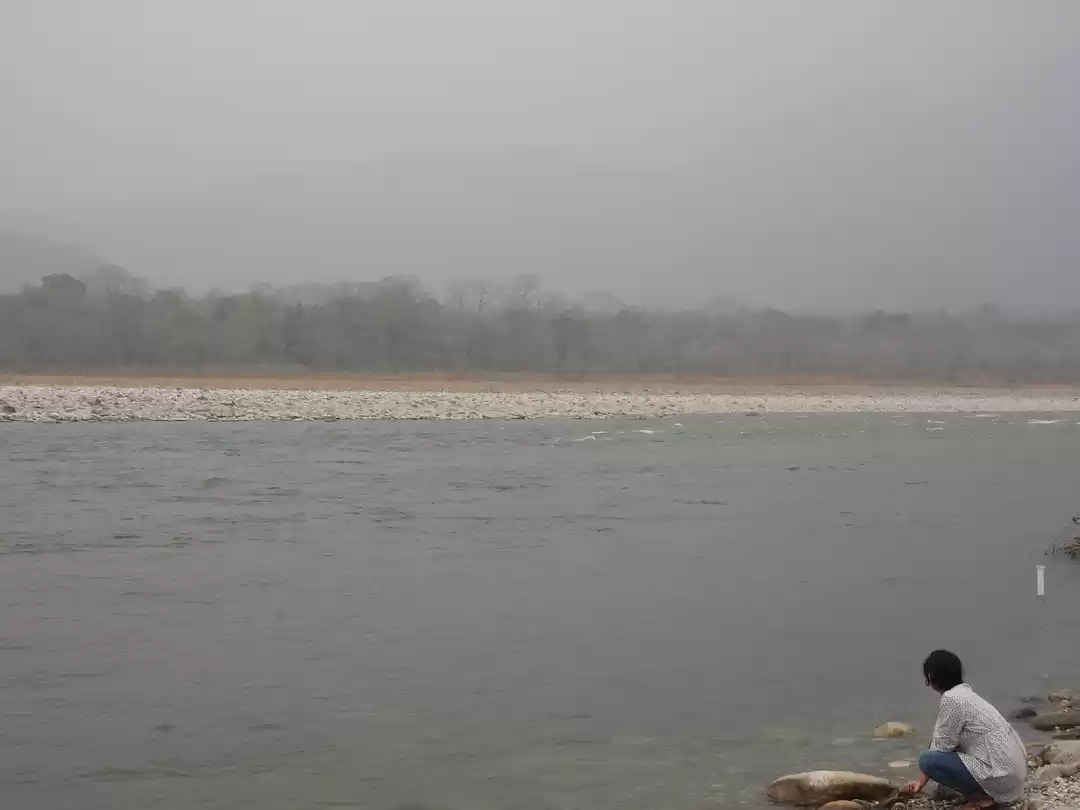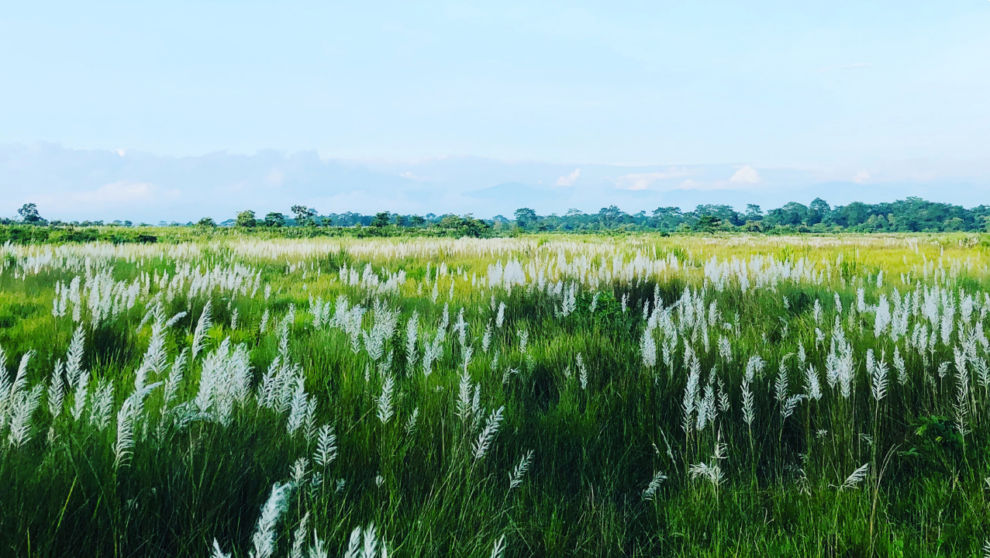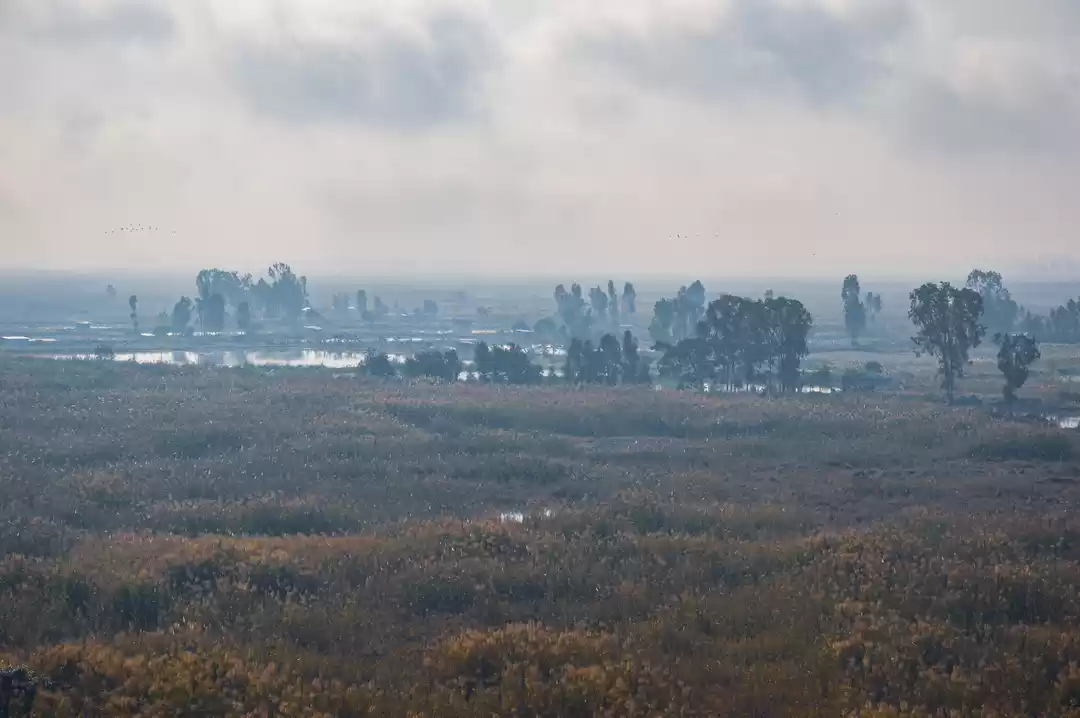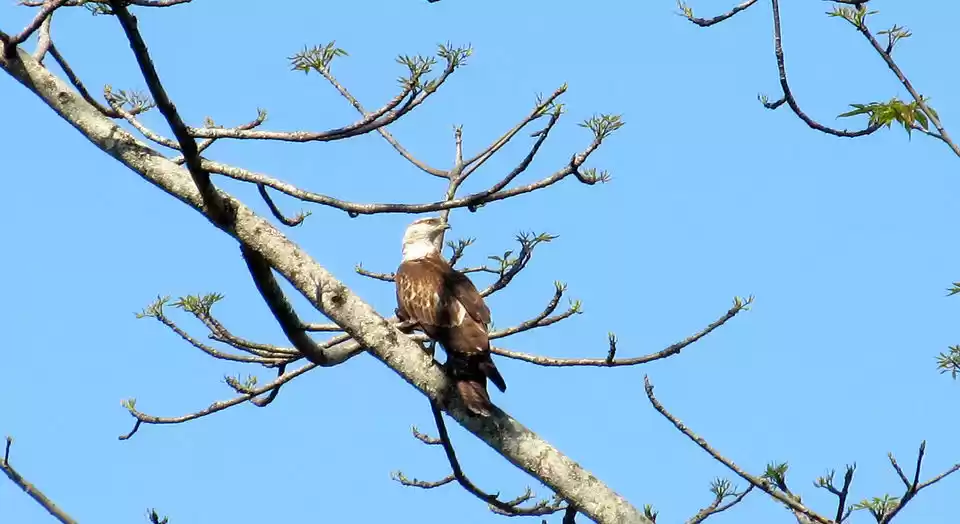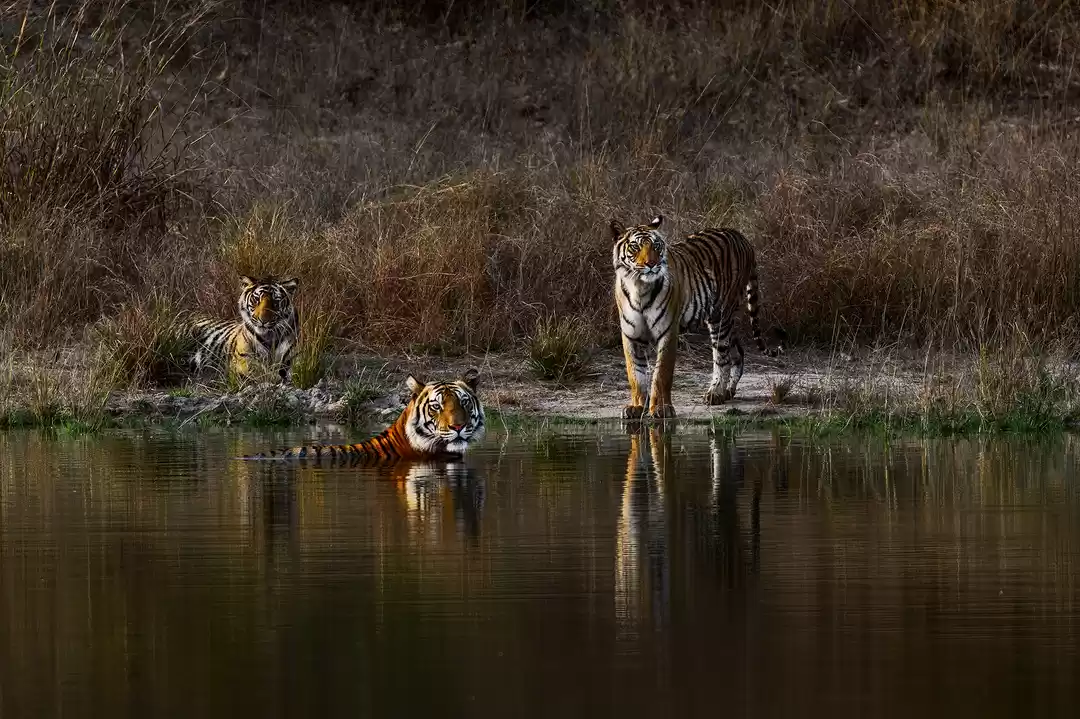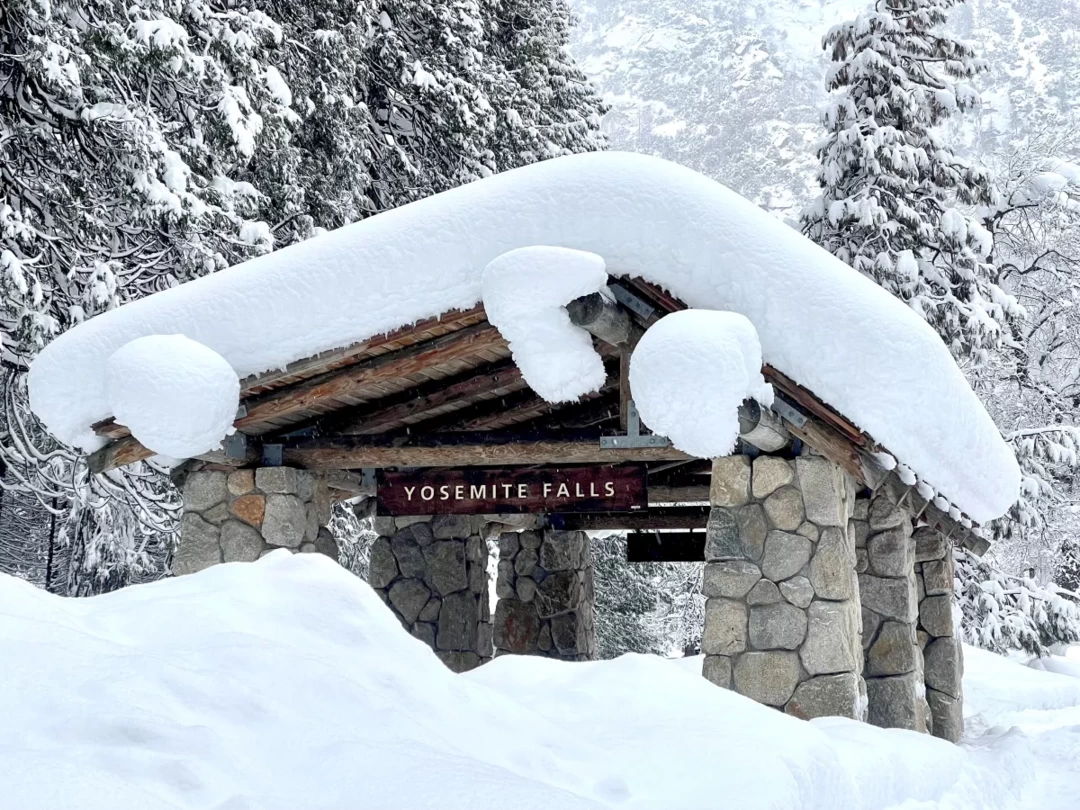Are you looking for a destination that offers a unique and unforgettable experience for nature lovers? Do you want to witness the majestic beauty of the Himalayas, the serene flow of the Manas River, and the diverse wildlife of India, all in one place? If yes, then you should visit Manas National Park, a World Heritage Site in Assam that will leave you spellbound by its natural wonders and cultural heritage.
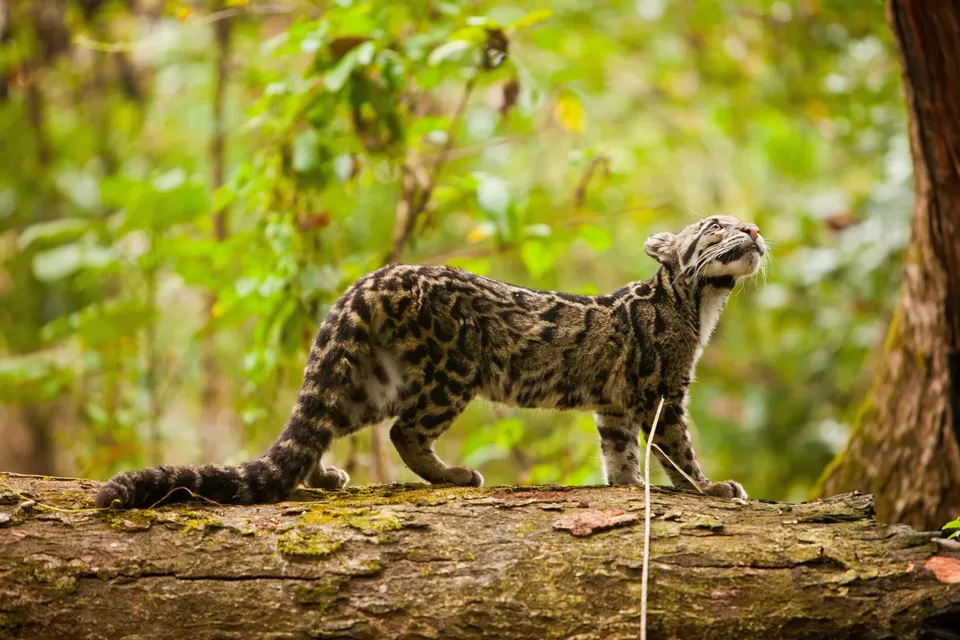
Manas National Park is one of the most remarkable and rewarding destinations in India. It is not only a national park, but also a wildlife sanctuary, a biosphere reserve, a tiger reserve, and an elephant reserve. It is home to more than 650 species of plants and more than 450 species of animals, including some of the rarest and most endangered ones in the world. It is also a place where you can enjoy various tourism activities such as safari, rafting, bird watching, trekking, camping, and cultural programs.
In this article, we will explore the various aspects of Manas National Park and discover why it is one of the best places to visit in India. We will cover the history, geography, climate, flora, fauna, conservation efforts, tourism activities, and travel information of Manas National Park.
History of Manas National Park
The name Manas National Park comes from the Manas River, which is a major tributary of the Brahmaputra River. The word Manas means “mind” or “consciousness” in Sanskrit, and it is believed that the river was named after the serpent goddess Manasa, who is worshipped by the local people.
The human history and cultural heritage of Manas National Park dates back to ancient times and reflects the influence of various kingdoms, tribes, religions, and languages. The park was once part of the kingdom of Kamrupa, which ruled over Assam from the 4th to the 12th century CE. The park was also a hunting ground for the royal family of Cooch Behar, which ruled over parts of Assam and Bengal from the 16th to the 20th century CE. The park is inhabited by several ethnic groups such as the Bodo, the Rabha, the Garo, the Mech, and the Koch, who have their own distinct culture and traditions.
The evolution and recognition of Manas National Park as a sanctuary in 1928, a World Heritage Site in 1985, a Biosphere Reserve in 1989, and a National Park in 1990 was a result of several factors and events that shaped its conservation history. Some of these factors and events were:
- The establishment of the Manas Wildlife Sanctuary by the British government in 1928 to protect the wildlife and habitat of the area.
- The declaration of Manas as a World Heritage Site by UNESCO in 1985 for its outstanding universal value as a natural site that represents significant ecological and biological processes.
- The designation of Manas as a Biosphere Reserve by UNESCO in 1989 under the Man and Biosphere Programme for its role as a site for scientific research and sustainable development.
- The notification of Manas as a National Park by the Government of India in 1990 for its legal status as a protected area under the Wildlife Protection Act of 1972.
- The inclusion of Manas as an Elephant Reserve by the Government of India in 2003 under Project Elephant for its importance as a habitat for Asian elephants.
You May Also Love to Read About Aakanksha's Wildlife Chase Across The Country
Geography and Climate of Manas National Park
Manas National Park is situated on the foothills of the Himalayas in Assam, the northeastern state of India. It covers an area of 2837 sq. km and borders the Royal Manas National Park in Bhutan. The park lies between 26°40’ N and 27°01’ N latitude and between 90°01’ E and 92°03’ E longitude.
The topography and hydrology of Manas National Park are characterized by hills, valleys, plains, rivers, streams, and wetlands. The park has an elevation range from 50 m to 900 m above sea level. The highest point in the park is Chumpu Peak (900 m), while the lowest point is Hakua River (50 m). The park is drained by five major rivers: Manas, Beki, Hakua, Bansbari, and Barnadi. The most prominent feature and landmark of the park is Mathanguri, which is located at the confluence of Manas and Beki rivers. It offers a panoramic view of the mountains and the river.
- The climate and seasons of Manas National Park are subtropical with four seasons: winter, pre-monsoon, monsoon, and post-monsoon. The average annual rainfall is about 3330 mm, which is mostly concentrated in the monsoon season from June to September. The average annual temperature is about 24°C, which varies from 15°C in winter to 37°C in summer. The average annual humidity is about 77%, which ranges from 65% in winter to 85% in monsoon.
Flora and Fauna of Manas National Park
The vegetation and biodiversity of Manas National Park are rich and diverse with more than 650 species of angiosperms (flowering plants). The park has four types of vegetation: tropical semi-evergreen forests, tropical moist deciduous forests, tropical dry deciduous forests, and alluvial grasslands. Some of the common and dominant plant species found in the park are:
Tropical semi-evergreen forests: Dipterocarpus macrocarpus, Artocarpus chaplasha, Terminalia myriocarpa, etc.
Tropical moist deciduous forests: Shorea robusta, Lagerstroemia speciosa, Terminalia bellirica, etc.
Tropical dry deciduous forests: Anogeissus latifolia, Dalbergia sissoo, Acacia catechu, etc.
Alluvial grasslands: Saccharum spontaneum, Phragmites karka, Imperata cylindrica, etc.
The wildlife and endangered species of Manas National Park are high and unique with more than 450 species of vertebrates (animals with backbones). The park has a high concentration of wild water buffaloes (Bubalus arnee), which is the largest population in the world. The park is also home to some of the rarest and most endangered species in the world, such as:
Pygmy hog (Porcula salvania): A critically endangered species of pig that is found only in Manas National Park and its vicinity. It is the smallest and rarest wild pig in the world, measuring about 25 cm in height and 65 cm in length. It lives in dense grasslands and feeds on roots, tubers, insects, and worms.
Golden langur (Trachypithecus geei): An endangered species of monkey that is found only in Manas National Park and its vicinity. It is one of the most beautiful and charismatic primates in the world, with a golden fur and a long tail. It lives in semi-evergreen and moist deciduous forests and feeds on leaves, fruits, flowers, and seeds.
Hispid hare (Caprolagus hispidus): An endangered species of hare that is found only in Manas National Park and its vicinity. It is one of the rarest and most elusive mammals in the world, with a coarse brown fur and a short tail. It lives in tall grasslands and feeds on grasses, herbs, and roots.
Assam roofed turtle (Pangshura sylhetensis): An endangered species of turtle that is found only in Manas National Park and its vicinity. It is one of the smallest and most distinctive turtles in the world, with a dark brown shell and a yellow stripe on its head. It lives in rivers, streams, and wetlands and feeds on aquatic plants, insects, and fish.
You may Love: 15 Places That Are Perfect for Tiger Spotting
Other animals that can be seen in Manas National Park are:
One-horned rhinoceros (Rhinoceros unicornis): A vulnerable species of rhinoceros that is native to India and Nepal. It is one of the largest and heaviest land animals in the world, weighing up to 2.5 tonnes and measuring up to 4 m in length. It has a single horn on its nose and a thick grey skin. It lives in grasslands and swamps and feeds on grasses, aquatic plants, and fruits.
Asian elephant (Elephas maximus): An endangered species of elephant that is native to Asia. It is one of the largest and most intelligent land animals in the world, weighing up to 5 tonnes and measuring up to 6 m in length. It has large ears, a long trunk, and tusks (male only). It lives in forests and grasslands and feeds on grasses, leaves, bark, and fruits.
Bengal tiger (Panthera tigris tigris): An endangered species of tiger that is native to India and other parts of Asia. It is one of the most powerful and majestic predators in the world, weighing up to 250 kg and measuring up to 3 m in length. It has a yellow-orange fur with black stripes and a white belly. It lives in forests and grasslands and feeds on deer, boar, buffalo, and other animals.
Clouded leopard (Neofelis nebulosa): A vulnerable species of leopard that is native to Asia. It is one of the most elusive and beautiful cats in the world, weighing up to 25 kg and measuring up to 1.5 m in length. It has a grey-brown fur with dark cloud-like markings and a long tail. It lives in forests and feeds on monkeys, rodents, birds, and other animals.
Sloth bear (Melursus ursinus): A vulnerable species of bear that is native to India and other parts of Asia. It is one of the most distinctive and adaptable bears in the world, weighing up to 140 kg and measuring up to 1.8 m in length. It has a shaggy black fur with a white chest mark and a long snout. It lives in forests and grasslands and feeds on termites, ants, honey, fruits, and eggs.

Conservation Efforts in Manas National Park
Manas National Park faces several threats and challenges from human activities such as poaching, encroachment, logging, mining, grazing, and insurgency. These threats have resulted in the loss and degradation of wildlife and habitat in the park. Some of the impacts and consequences of these threats are:
- The decline and extinction of some wildlife species such as the pygmy hog, the golden langur, the hispid hare, and the Assam roofed turtle.
- The reduction and fragmentation of some vegetation types such as the tropical semi-evergreen forests and the alluvial grasslands.
- The disturbance and pollution of some water sources such as the Manas River and the Beki River.
- The conflict and violence between the local people and the authorities over land rights and resource management.
To protect and restore Manas National Park, several initiatives and measures have been taken by government agencies such as Forest Department, Wildlife Trust of India (WTI), and International Union for Conservation of Nature (IUCN). Some of the projects and programs that have been implemented or supported by these agencies are:
Project Tiger (1973): A national program launched by the Government of India to conserve the Bengal tiger and its habitat in India. Manas National Park was included as one of the nine tiger reserves under this program in 1973. The program aims to monitor the tiger population, prevent poaching, reduce human-animal conflict, create awareness, and involve local communities.
Project Elephant (1992): A national program launched by the Government of India to conserve the Asian elephant and its habitat in India. Manas National Park was included as one of the 32 elephant reserves under this program in 2003. The program aims to protect the elephant corridors, mitigate human-elephant conflict, enhance habitat quality, promote research, and ensure welfare.
Manas Tiger Conservation Program (2008): A joint program initiated by WTI and IUCN with support from various partners such as Forest Department, National Tiger Conservation Authority (NTCA), and Bodoland Territorial Council (BTC). The program aims to restore the tiger population and habitat in Manas National Park through various activities such as anti-poaching, veterinary care, community engagement, and translocation.
Pygmy Hog Conservation Program (1995): A collaborative program initiated by WTI and Durrell Wildlife Conservation Trust (DWCT) with support from various partners such as Forest Department, BTC, and IUCN. The program aims to save the pygmy hog from extinction through various activities such as captive breeding, reintroduction, habitat management, and monitoring.
Also Read: Hidden Gems of Assam
Tourism Activities in Manas National Park
Manas National Park offers various attractions and benefits for visitors who want to enjoy nature and wildlife in a serene and scenic setting. Some of the reasons why visitors should choose Manas National Park as their destination are:
- To witness the World Heritage Site that represents significant ecological and biological processes in one of the richest biodiversity hotspots in the world.
- To see the endangered and endemic species that are found only in Manas National Park or its vicinity, such as the pygmy hog, the golden langur, the hispid hare, and the Assam roofed turtle.
- To enjoy the safari and rafting activities that allow visitors to explore and experience the park’s wildlife and landscape in an adventurous and thrilling way.
- To experience the local culture and cuisine that reflect the diversity and richness of the ethnic groups that inhabit and coexist in Manas National Park.
- To support the conservation efforts that aim to protect and restore the park’s wildlife and habitat.
- To cater to the needs and preferences of visitors, Manas National Park provides various options and facilities for tourism activities.
Travel Information for Manas National Park
To plan a trip to Manas National Park, visitors need to know some basic travel information such as how to reach, when to visit, and what to do and what not to do in Manas National Park. Some of this information is:
How to reach: Manas National Park can be reached by road, rail, or air from Guwahati or other nearby cities. Some of the distances, routes, modes, and costs involved in travelling to the park are:
By road: Manas National Park is about 176 km from Guwahati by road. The route is via NH 27 and NH 31C. The mode of transport can be car, bus, or taxi. The cost of transport can vary from Rs. 2000 to Rs. 5000 depending on the mode and type of vehicle.
By rail: Manas National Park is about 22 km from Barpeta Road railway station by road. The railway station is connected to Guwahati and other major cities by various trains. The mode of transport from the railway station to the park can be car, bus, or taxi. The cost of transport can vary from Rs. 500 to Rs. 1500 depending on the mode and type of vehicle.
By air: Manas National Park is about 150 km from Lokpriya Gopinath Bordoloi International Airport in Guwahati by road. The airport is connected to Delhi, Mumbai, Kolkata, and other major cities by various flights. The mode of transport from the airport to the park can be car, bus, or taxi. The cost of transport can vary from Rs. 3000 to Rs. 8000 depending on the mode and type of vehicle.
When to visit: The best time to visit Manas National Park is from November to April, when the weather is pleasant and the wildlife is active and visible. The park is open for visitors from 6 am to 5 pm every day except on Thursdays, when it is closed for maintenance. The duration and frequency of visiting the park depend on the availability and preference of the visitors, but it is recommended to spend at least two days and one night in the park to enjoy its beauty and diversity.
What to do and what not to do: To have a safe and enjoyable trip to Manas National Park, visitors need to follow some tips, guidelines, rules, and regulations that are set by the authorities and the operators. Some of the dos and don’ts that visitors should adhere to are:
- Do respect the wildlife and their habitat by maintaining a safe distance, avoiding flash photography, keeping silent, and not feeding or disturbing them.
- Do follow the instructions and directions of the guides and drivers who are trained and experienced in handling the safari and rafting activities.
- Do carry the essentials such as water, snacks, sunscreen, hat, sunglasses, binoculars, camera, and identity proof while visiting the park.
- Do enjoy the local culture and cuisine by interacting with the local people, participating in their cultural programs, and tasting their delicacies.
- Do support the conservation efforts by donating, volunteering, or spreading awareness about Manas National Park and its wildlife.
- Don’t litter or pollute the park by throwing garbage, plastic, or any other waste materials. Use the dustbins or carry your own trash bags.
- Don’t smoke or drink alcohol in the park as it is prohibited and harmful for both you and the environment.
- Don’t venture out of your vehicle or campsite without permission or supervision as it is dangerous and illegal. Stay within the designated areas and trails.
- Don’t harm or damage any plant or animal in the park as it is an offense punishable by law. Report any illegal or suspicious activity to the authorities.
Conclusion
Manas National Park is a destination that offers a unique and unforgettable experience for nature lovers. It is a place where you can witness the World Heritage Site that represents significant ecological and biological processes in one of the richest biodiversity hotspots in the world. It is a place where you can see the endangered and endemic species that are found only in Manas National Park or its vicinity. It is a place where you can enjoy various tourism activities such as safari, rafting, bird watching, trekking, camping, and cultural programs. It is a place where you can support the conservation efforts that aim to protect and restore the park’s wildlife and habitat.
Thank you for reading this article and we hope that you found it informative and helpful. Please share your feedback or comments with us and let us know what you think about Manas National Park. We would love to hear from you.




























